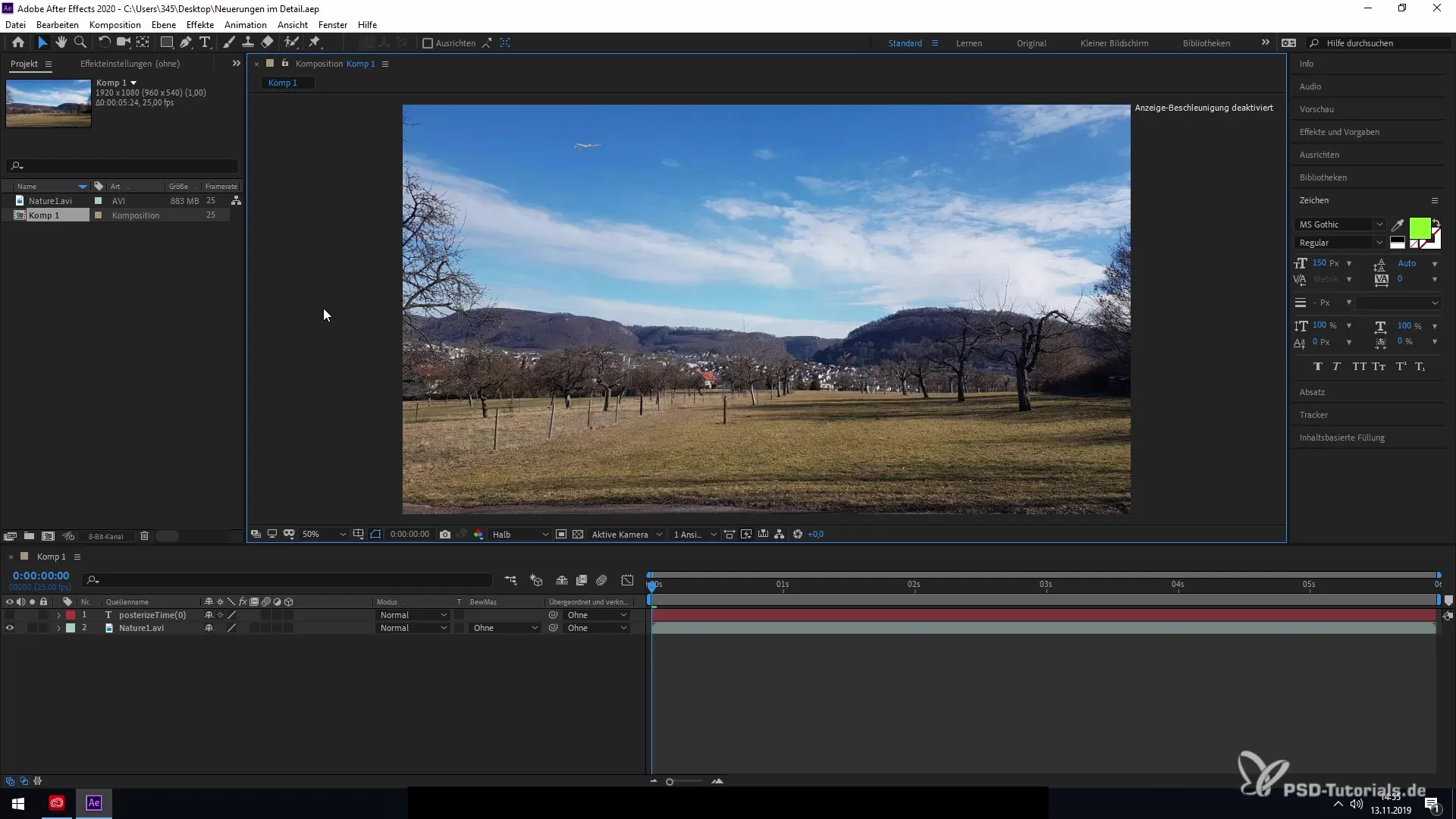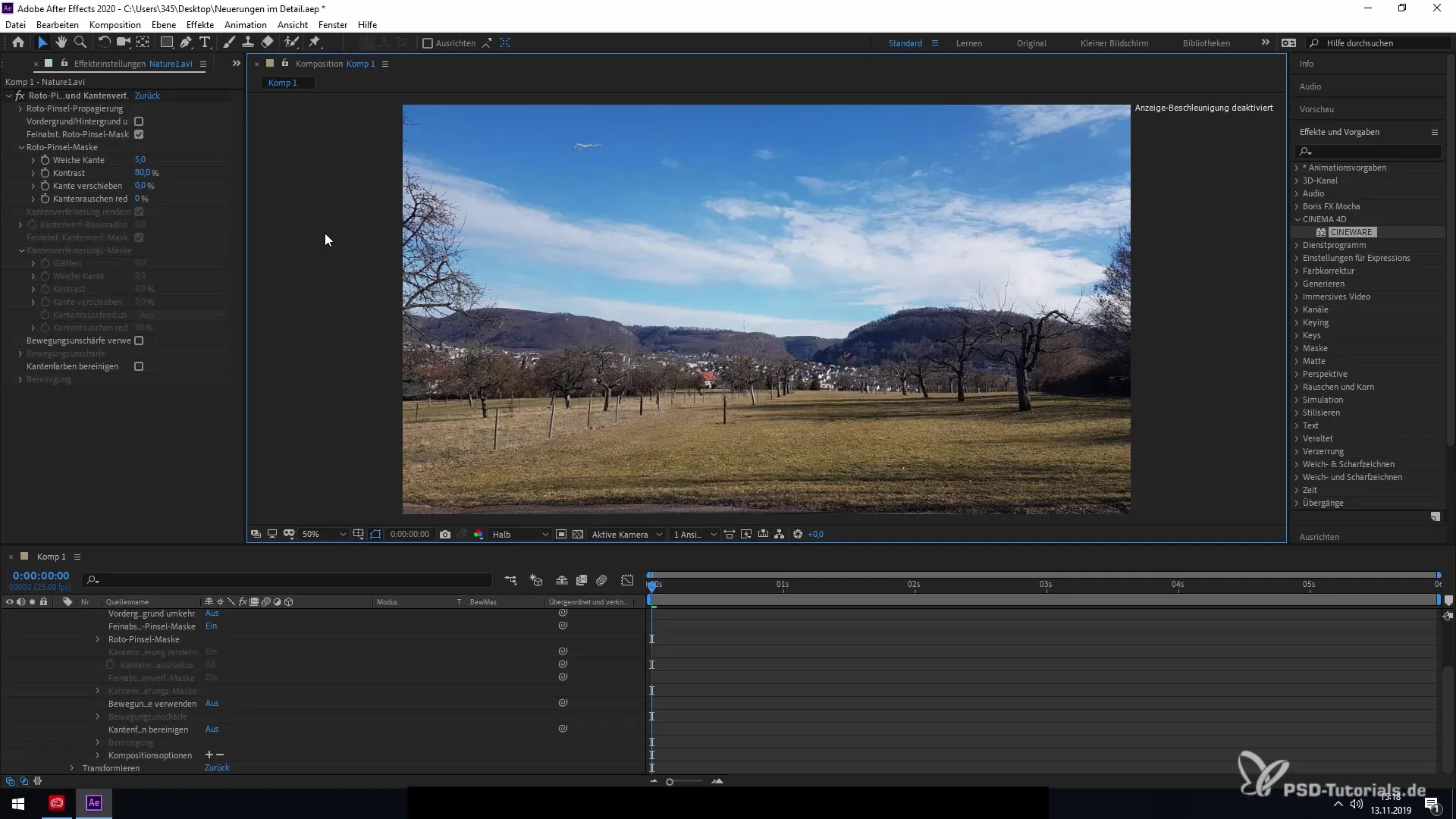The update of After Effects CC 2020 brings a variety of small but significant innovations that can greatly enhance your workflow. These aspects are often not covered in detail in separate tutorials but still deserve attention. Let’s go through the new features together that can help you work more effectively and efficiently.
Main Insights
- Improved performance when working with expressions.
- Support for new video codecs and formats.
- Optimizations for the Roto Brush.
- Information on system compatibility and hardware issues.
- Updates to content-aware fills.
Step-by-Step Guide
Performance Improvements in Expressions
One of the first innovations concerns performance when working with expressions. Particularly when using “posterize time zero,” the calculation is now performed only once per composition instead of multiple times. This results in impressive time savings and improves the overall performance of your projects.

New Format Support
A fundamental aspect of the update is the new supported formats. After installation, you will be able to utilize advanced formats like Canon XF or HEVC. This means better playback quality, particularly for 10-bit or H.265 content available in HD and Ultra HD. Additionally, ProRes file decoding is supported with improved performance directly.
Cinema 4D R21 Integration
An exciting innovation lies in the integration of the new version of CineWare Renders, available in version R21. If you have a Maxon account, you can seamlessly use these features in After Effects. The special thing: Cinema 4D is automatically installed with After Effects, providing all the necessary content files.
Improved Functionality of the Roto Brush
The Roto Brush has also received an update. It now works faster, requires less memory, and is more resource-efficient. You can use it to effectively remove objects. Simply double-click on your viewport, and you will enter a new layer. By activating the Roto Brush, you can remove the selected object – this is faster than ever before.

System Compatibility Report
A particularly useful feature is the new system compatibility report. After Effects can now detect known issues with certain hardware configurations and gives you warnings if your setup is not optimal for the software. This can help you identify and address important issues early on.

Changes in Rendering
The support for OpenCL is removed in this version; instead, the focus is put on software rendering. Additionally, the Raytrace 3D rendering has been revised to enable more efficient workflows. Certain frames are now cached, so you need to render less frequently while viewing a specific frame.
Updated Content-Aware Fills
Another highlight in this update is the revision of content-aware fills. Memory usage has been reduced by 66%, and performance has been improved by 10% to 25%, depending on the system. Warnings that occurred during initial uses of this function have been resolved, and interruptions caused by low transparency have been removed.
Special Features for Older Versions
The features for saving in previous versions have been updated to support After Effects versions 15 and 16. This allows you to edit projects created with older versions seamlessly and save them in a new version.
Fixing Known Bugs
A bug was fixed when selecting label groups, so no more tinted layers can be selected. Additionally, transfer issues with EXR sequences have been smoothed out.
Summary – Updates Explained: After Effects CC 2020 (November 2019)
The update of After Effects CC 2020 brings numerous small but important improvements that enhance user-friendliness and performance. Whether through new format support, improved features, or optimized workflows – you now have the opportunity to work even more efficiently.
Frequently Asked Questions
What are the main performance improvements in After Effects CC 2020?The main improvement relates to the calculation of expressions, which are now performed more efficiently and save time.
What new formats are supported?There is extended support for formats like Canon XF and HEVC, allowing for better playback quality.
What has changed in the Roto Brush?The Roto Brush now works faster and requires fewer resources, making it easier to use effectively.
How does After Effects detect hardware issues?The new system compatibility report identifies known issues with specific hardware configurations and provides warnings.
What improvements have been made to content-aware fills?Memory usage has been reduced by 66% and performance has improved by 10% to 25%, depending on the system.


